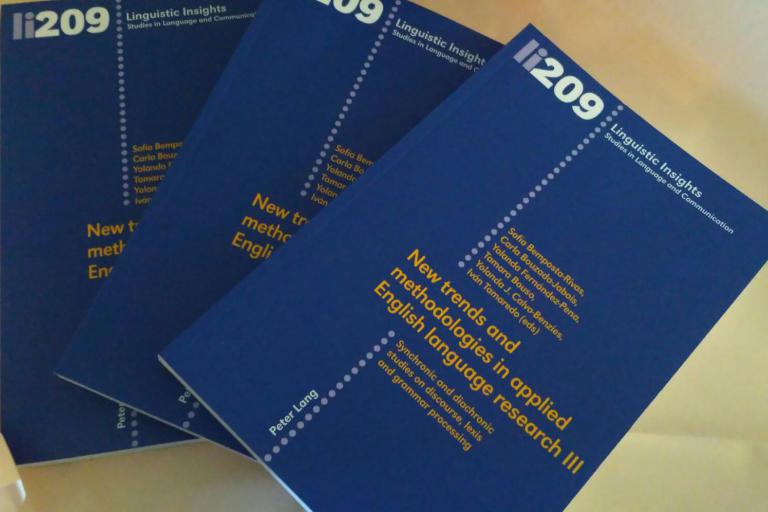Liliane Haegeman conducted the seminar “Cartography, intervention and the left periphery in English”, in which she paid attention to the revision of Rizzi’s cartography as well as to consequences which the placement of adverbials has for the syntax of the clause.
CV details
Prof Liliane Haegeman completed her BA and PhD degrees at the University of Ghent. After that, she became Full Professor at the Universities of, first, Geneva and, later, Charles de Gaulle (Lile III). Currently, she is Full Profesor at the English Department in Ghent. Prof Haegeman has taught courses which cover, among others, topics in English and general linguistics, syntactic theory, comparative syntax and the syntax of Germanic languages. In her research she tries to couple empirical data and syntactic theory in such a way that the former can either corroborate or refute findings which have been favoured by the theory of grammar. Her investigation has been focused mainly on dialect variation (with special reference to English and West Flemish, which is her native language), agreement properties of conjunctions, sentential negation, the expression of the possessor relation and register-based variation (especially ellipsis). Currently she is interested in the analysis of the structure of the left egde of the clause and the syntax of adverbials and its implication for the functional articulation or the “cartography” of the sentence. Liliane Haegeman has written and edited a number of specialised volumes in Routledge, Blackwell, Cambridge University Press, Mouton de Gruyter, Kluwer, Longman, etc. She is the author of more than 100 articles and book chapters in prestigious journals and publishing houses. She belongs to the editorial committees of, among others, Linguistic Aktuell/Linguistics Today, Lingua, Syntax and Linguistic Inquiry.
Abstract of the seminar
Starting from the idea that all structure is formed according to the X-bar format it was shown that the simple clause structure in terms of CP-IP-VP is insufficient to capture the empirical data of English. The lectures focused on the CP layer and provided arguments for decomposing CP into an articulated hierarchy of functional projections which encoded concepts related to information structure/discourse anchoring. After a general presenation of the articulated CP as proposed in Rizzi (1997), additional evidence was provided from English to support the proposal. The cartographic approach to clause structure has elaborated a highly articulated template of projections in the CP domain. However, the status of the template in linguistic theory may be questioned. In particular the question arises whether, for instance, the sequence Topic> Focus does not follow direction from Information Structure, old information preceding new information. Alternatively, the sequence can be made to follow from an enriched theory of intervention (Abels 2008, Haegeman 2008). In this respect, the status of the lower topic, following Focus, raises interesting questions. It will be shown that the availability of the lower topic in some languages and its absence in others can be derived from intervention effects. Some clause types seem to have a reduced left periphery; adverbial clauses are a case in point. Two approaches to account for this reduced left periphery were examined, one closely cartographic which postulates that the relevant domains are reduced and lack a particular stretch of the CP-layer, another which explores a theory of intervention to derive the observed patterns.







